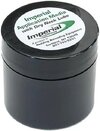1942farmall
Member
- Joined
- Nov 13, 2021
- Messages
- 47
Silly question of the day. I've been reloading for almost 40 years. My wife got me a pretty nice annealing machine (Ugly Annealer) for Christmas.
I had some older 30.06 brass that I sized in September. The necks were so hard, they squealed when I sized them.
I'm sure they had hardened due to being fired numerous times.
My typical process is to size and decap my brass, then run thru my case polisher.
That way, my brass is clean and looks nice for priming, charging, and seating.
I simply like clean, new-looking ammo.
I'm aware I should anneal before sizing but would like to after the polishing so I don't lose the ability to see the annealed necks.
My guess is I'll be polishing and annealing before sizing now.
What are others doing?
Like I said... probably dumb but I'm curious.
Thanks
I had some older 30.06 brass that I sized in September. The necks were so hard, they squealed when I sized them.
I'm sure they had hardened due to being fired numerous times.
My typical process is to size and decap my brass, then run thru my case polisher.
That way, my brass is clean and looks nice for priming, charging, and seating.
I simply like clean, new-looking ammo.
I'm aware I should anneal before sizing but would like to after the polishing so I don't lose the ability to see the annealed necks.
My guess is I'll be polishing and annealing before sizing now.
What are others doing?
Like I said... probably dumb but I'm curious.
Thanks



